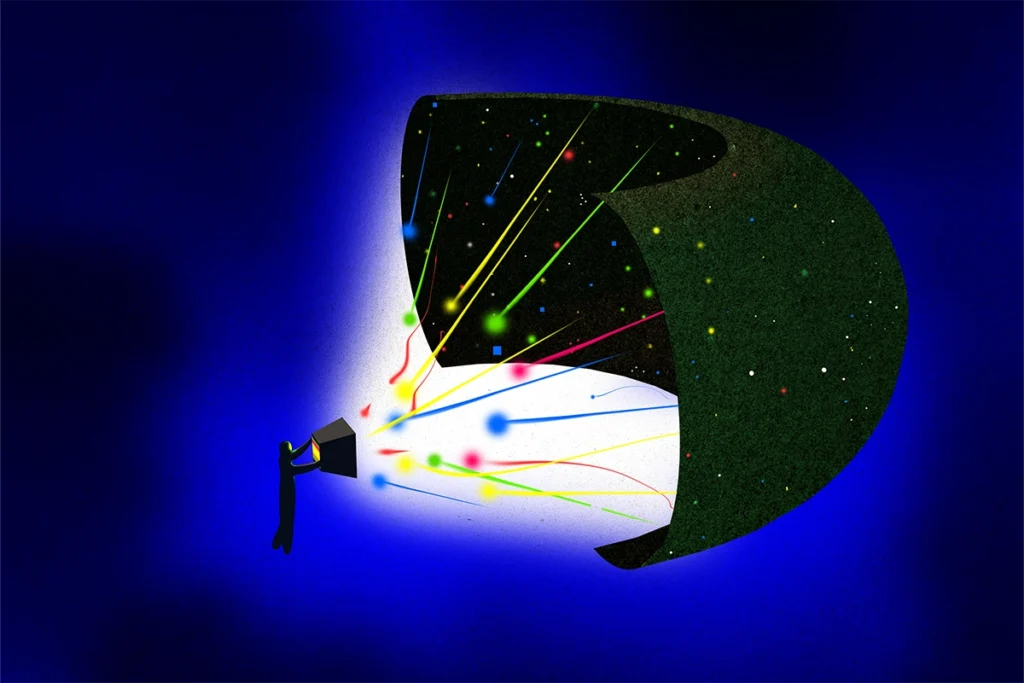In the two years since Elon Musk’s purchase and overhaul of Twitter, now called X, millions of users have left or stopped using the platform. Neuroscientists have been no exception: The “Neurotwitter” community—once a place for researchers to make cross-disciplinary connections, read new papers and share their own work—has become “a bit more barren,” says Kevin Mitchell, associate professor of genetics and neuroscience at Trinity College Dublin.
Some scientists moved to alternative platforms, including Mastodon and Bluesky, in the hopes of finding a viable replacement, but “the community was too small,” says Russell Poldrack, professor of psychology at Stanford University. In August, for example, X had an average of 41 million daily users, whereas Bluesky had 252,000, according to data from Similarweb, a digital intelligence platform.
But the tide may be starting to turn. A surge of users joined Bluesky after the 5 November U.S. election, and more than 115,000 people deactivated their X accounts on 6 November, Similarweb data show. “It’s a super interesting, sudden phenomenon: There’s been this little trickle, and then suddenly a flood,” Mitchell says.
“I’m very happy that this [shift] is happening, because I always felt it was impossible—migrating one community from one social network to the other,” says Joao Barbosa, junior principal investigator at the Institut de Neuromodulation in Paris.
Twitter “became somewhat essential for our field—you’d truly miss out on things if you weren’t on it. And that’s why I stayed as long as I did,” says Kelsey Nemec, a postdoctoral fellow in neuroscience at Seattle Children’s Hospital. “But with this latest election, a mass exodus of scientists in my field collectively made the shift [to Bluesky], and I finally felt that I’d be able to get rid of X without major personal sacrifice or lost career opportunities.”
Yet other researchers, including Mitchell, have expressed reservations about this migration. “My concern with everyone just retreating to Bluesky was that it was retreating to the ivory tower,” Mitchell says. “While it’s nice to have a space for scientific discussions, I think it’s also important that scientists are represented in really social spaces, and Twitter is a big social space.”
The time is now to argue vociferously for immense societal and economic value of public investment in scientific research. But unfortunately that argument must be made not to the choir in our beautiful blue bubble here, but in the arena of X where said value is now questioned: x.com/suryaganguli…
— Surya Ganguli (@suryaganguli.bsky.social) November 19, 2024 at 7:23 AM
B
luesky is a decentralized social-media network that was created by Jack Dorsey, founder and former CEO of Twitter, in 2019. It launched as an independent company in 2021 and cut ties with Twitter in 2022. Initially, new users could join only via invitation, but the site opened to the public in February of this year.Bluesky now has more than 21 million users and garners about 5 million daily visits, and there has been a “huge influx” of neuroscientists, says Nicole Rust, professor of psychology at the University of Pennsylvania.
Some users say they made the switch because of Musk’s changes to the X platform, whereas others say they left in protest of his support for President-elect Donald Trump in the U.S. election.
On 16 October, X announced in an update to its terms of service, which went into effect 15 November, that all content on the site can be used to train artificial-intelligence models. This change prompted Poldrack to delete all 9,000 of his posts on X. “Pretty much the only value I hold for them at this point is my content, and I didn’t want to give [X] that value,” he says. Poldrack wasn’t using the platform as much after the science community dried up there, he says, and he is using Bluesky now that more neuroscientists have joined.
Other changes to X include decreased content moderation, algorithm changes and loosened restrictions for blocked accounts. “Twitter was so full of ads, bots and Nazis, it honestly started to feel unsafe. I also disliked the idea that I was supporting Elon Musk after he supported Trump in the election,” says Audrey Drotos, a graduate student at the University of Michigan.
Daily neuroscience-related posts on Bluesky have risen to an average of 179 in the past 7 days, compared with an average of 35 in the month of October, 28 in September and 15 in August, according to an analysis conducted by The Transmitter using data collected through Communalytic, a social-science research tool.
Neuroscientists have also created a plethora of subfield-specific starter packs, a Bluesky feature that enables a user to follow a list of up to 150 related accounts at once. “They’ve been brilliant, especially for just rapidly building up little communities,” Mitchell says.
I
n its earlier days, Twitter emerged as a forum for scientists to connect with one another and interact with the public. “My research is very multidisciplinary, so it offered me a chance to chat with not just other neuroscientists, but physicists and philosophers and computer scientists and all kinds of people that I wouldn’t have had a chance to meet otherwise,” Mitchell says. “It was a fantastic arena for sharing ideas.”Twitter also facilitated conversations about non-scientific issues surrounding research, Rust says, such as, “What’s the right way to evaluate graduate school applications, or what’s the right way to manage a lab?”
Charan Ranganath, professor of psychology at the University of California, Davis, says he joined Twitter about 10 years ago to “get my finger on the pulse of what students were thinking,” but he ended up using it to connect with people—he made friends and even recruited two postdoctoral researchers because of interactions on the platform, he says. “Then Musk took over, and so it morphed into a hellscape.”
Policymakers and members of the public are still on X, Rust says, so if scientists want to contribute to scientific communication and policy discussions, “you have to go where they are. So in that sense, I think it is important to be there,” she says. Yet “I don’t feel that any scientist has a responsibility to be there,” particularly if the platform has a negative effect on their mental health, she adds.
Some scientists, including Rust and Angeline Dukes, assistant professor of neuroscience at the University of Minnesota, say they will cross-post content to both Bluesky and X to reach the different audiences on the two platforms. “I would hate to exclude people who might choose to stay on Twitter,” Dukes says.
Despite the surge in new users, Bluesky still has only a fraction of the daily traffic that X has. But the neuroscientists who spoke to The Transmitter say they are optimistic about the nascent community that is taking shape.
“Right now, it feels a lot like Twitter around 2017 to 2018,” says Shahab Bakhtiari, assistant professor of psychology at the University of Montreal. “Not quite the golden days, but it’s getting there.”






